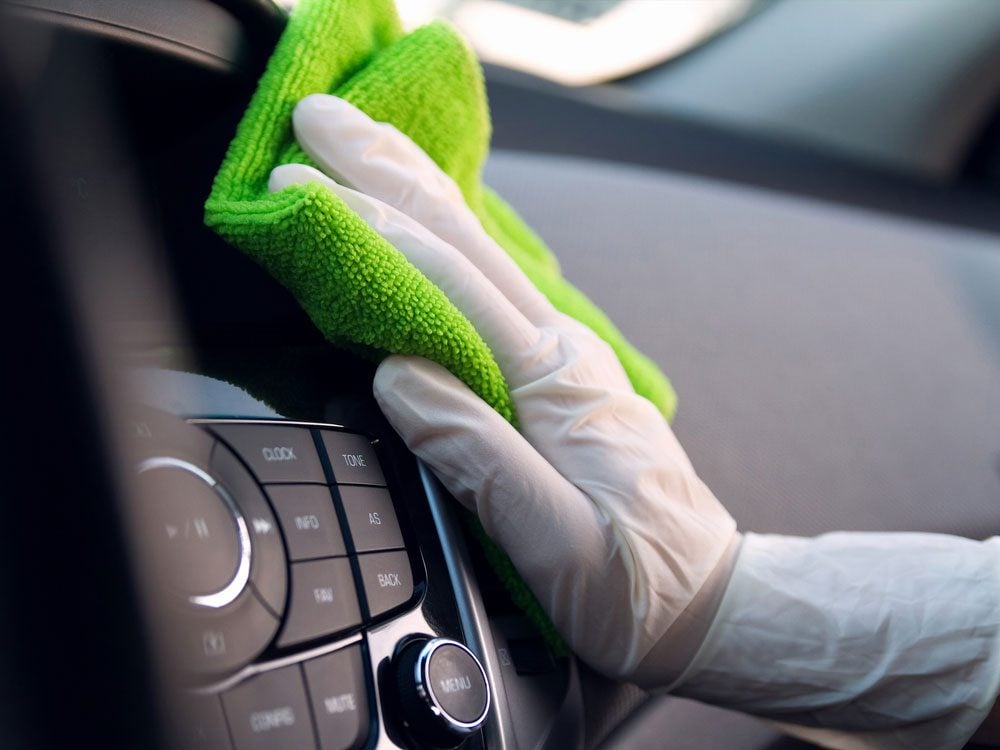
Start from the Bottom
The first step to freshening up your car for spring is to remove salt from the vehicle’s underside. Connect a garden hose to a spigot, drag the hose out to your car and reach directly underneath to wash out every exposed area. If that car detailing method sounds unappealing, you could also take your car to a brushless car wash that includes an undercarriage wash.

Wash and Wax Your Car
If you decide to wash the car yourself, choose a liquid or powder cleaner for the body. If there are tar or other stains on the finish, use a stronger formula designed to protect the finish and remove stubborn spots. Stay away from abrasives that can scratch the paint, like steel wool. Once your car is dry, apply wax. For longer-lasting protection, try a synthetic polymer-based wax.
Here’s how to clean inside car windows.

Check Your Tires
Because standard car wash cleaners won’t get your tires sufficiently clean, use a tire and wheel cleaner. Liberally apply tire-cleaner to the outer surface, then use a tire brush to vigorously scrub back and forth. When done, apply the cleaner to the wheels, allow the solution to set for a minute, and then use a clean paintbrush to remove any debris. Next, rinse the wheel and tire with a hose. Dry both with a microfibre towel.
Find out how to change a flat tire in nine easy steps.

Replace the Wiper Blades
The beginning of spring is a great time to replace wiper blades, especially if the rubber has cracked. Generally, wiper blades last about six months—whenever you notice streaking or skipping on the windshield, it’s time to swap them out. Use any standard window solution to clean the inside of your front and rear windows (there may be more dirt blocking your vision than you realize).
Learn how to replace wiper blades in six easy steps.

Clean the Interior
The same salt and grime that attacked your car’s exterior during winter probably found its way inside your vehicle. Use a shop vacuum to remove any dirt from between the seats. Then, use a foaming fabric and upholstery cleaner for cloth seats, spot-lifter or stain-remover products for carpeting, and Armour All for any sensitive surfaces.
When it comes to leather and woods, your best bet is to familiarize yourself with your owner’s manual and determine what cleansers are OK to use. For many leathers, any high-UV leather conditioner that’s pH-balanced and contains stain repellents and waterproofing agents should be sufficient. For any wood-grain surfaces, select a product that’s formulated specifically to clean the type of wood in your car.
For more great tips on how to maintain your car and to find the parts you need, visit NAPA Canada.
Next, check out how to clean rubber car mats.